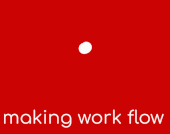Deployed strategically, print and document services have enormous potential to drive up operational efficiencies and workplace productivity. However, many businesses don’t take a strategic approach to managing their devices, which is surprising given the perennial pressure to reduce costs across IT and facilities budgets.
A successful transition to a managed print environment is straightforward when tackled in a logical way.
1. Analyse: Audit your current print environment
When embarking on any efficiency programme, first understand the current ‘state’ of your existing processes and systems. Undertake an audit to look at print volumes, workflows, devices that are under- or over-performing, machine reliability and so on. It’s also important to identify what’s measurable: if you can’t measure it, you won’t manage it.
2. Design: Document your desired state
Involve key stakeholders in deciding what ‘good looks like’ – your desired state. This should stem from your business requirements and may include targets for print efficiency, whether your priority is to reduce costs, speed up processes, reduce downtime or the maintenance burden on your facilities and IT teams, or any other key performance indicators relevant to your business.
3. Implement: Think about what you want from an MPS provider
As well as managing the day-to-day running of your print infrastructure, your MPS provider should be able to add value to your print environment. For example, analytics reporting can give you a detailed dashboard with a real-time view of machine uptime, usage, toner levels and other metrics across your entire printer estate. You may also want to set daily or weekly print limits per device from a central portal.
To ensure business continuity, look for a service level agreement that includes a comprehensive maintenance arrangement and same-day response. This will eliminate the need to keep printer spares on site.
Your MPS service provider should be able to tailor their services to your needs, including specifying the hardware and software, workflows, testing, installing and training.
Printer security is a big issue these days, as many companies overlook the need to protect their printers (and their wider network) from cyber threats. If you don’t have the expertise in-house, look for a partner who can ensure your systems are secure from attack via networked printers.
Likewise, if your current print environment doesn’t enable you to comply with GDPR, look for a printer management solution that supports full data encryption and ‘follow-me’ printing, so that confidential documents won’t print until the user authenticates the device.
4. Manage: Fix the basics first
Once you have a dashboard that gives you real-time analytics, you can begin to take steps to cut costs.
For example, you may be able to change printer settings to make ‘draft mode’ the default for standard printing. This simple change can half the amount of ink used, as well as speeding up printing. Educating end users to print in greyscale, and double-sided, will also help reduce spend on consumables. Identifying colour printers that are predominantly used for monochrome allows you to optimally deploy printers across the network.
Using a hold/release queued approach gives certain users authority to release held jobs, helping to cut down on unnecessary printing and putting an end to wasted documents that never get collected from the printer.
A cloud-based managed print solution will obviate the need for individual print servers and automate print driver updates, reducing the maintenance burden on your IT team.
Automating access to print metrics via your portal/dashboard is the first step in enabling small data-driven changes that will deliver major efficiencies.
5. Optimise: Look for ways to boost workplace productivity
Having improved the basic efficiencies across your printer estate, integrating your print environment with document management can transform workplace productivity. Scanning and storing documents enables you to manage them electronically; adding relevant metadata by reading invoice numbers, for example. This approach saves manual data re-entry, reduces errors, enables process automation and makes it easier to search and retrieve information.
The bottom line
On average, print costs can run at anywhere between 1% and 10% of a business’s turnover. By some estimations, a saving of 30% of your existing print costs is not uncommon once you switch to an MPS model. Taking a proactive approach to managing print can deliver substantial savings to the bottom line.
If you are looking for a single cost for all your printing needs, with maintenance and support services included as part of the package, get in touch.

